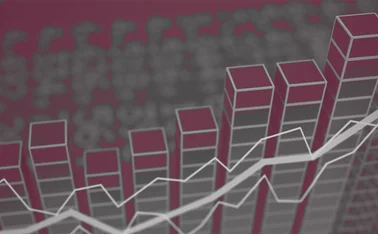
Reviving the economy – and solidarity


Europe has experienced many crises over the past 10 years, including the migrant crisis and terrorist attacks. Some, such as the eurozone debt crisis, have had a major impact on employment and prosperity. The Covid-19 pandemic is an extension of these crises, but the European Union has learned from the past.
The most important lesson of the eurozone crisis of 2010–12 was that the EU placed too much emphasis on correcting budgetary imbalances. This deflationary policy was imposed on the eurozone by the financial markets, which feared, mistakenly, that some eurozone countries would be unable to repay their public debts. But, in Greece, for example, the remedy of austerity and the loss of 25% of GDP made the consolidation of public finances even more difficult. Remembering this experience when the pandemic broke out, the EU switched very quickly to an expansionary fiscal policy to compensate for negative economic consequences.

There was also a complete change of tack on monetary policy. At the onset of the eurozone crisis, the European Central Bank’s (ECB’s) monetary policy was not accommodating, in contrast to central bank policies in the US, the UK and Japan. As a result, the economic recovery in the eurozone was slower and the ECB changed its policy to a more accommodating one in 2015. When the pandemic broke out, the ECB reinforced this expansionist non-standard monetary policy of quantitative easing (QE) by introducing a huge asset-buying programme. There are, however, limits to monetary policy. Along with a strong increase in money supply, mortgage deposits increased, indicating caution. Boosting the supply of money does little if it merely sits in a bank. As a consequence, the most impactful policy action should be more
fiscal stimulus.
In this way, fiscal and monetary policies became complementary. The extremely low interest rate – sometimes even negative in the long term – made the fiscal deficits cheap to finance. This joint effort by the monetary authorities and the governments of the EU member states tried to counteract the drop in demand. The European Commission (EC) itself became a big borrower on the capital market for the first time by financing the EU recovery fund and other initiatives amounting
to €1 trillion.
Public debt in the eurozone is expected to increase from 86% of GDP last year to 102% in the next three years. The average budget deficit was predicted to increase from 0.6% of GDP in 2019 to around 8.8% in 2020. It will almost halve by 2022 (to 4.7%), but will remain higher than the benchmark of 3% laid down in EU fiscal rules.
Necessity breaks taboos. This radical change in policy was made possible by the abandonment of a number of fears: inflation and even more public spending. But the EU wants to fight this crisis without damaging its social security systems. Public spending in the eurozone has risen from 47% of GDP in 2019 to 55% this year, and is projected to decrease to 50% in 2022.1
The EU drew lessons, but also benefited, from earlier reforms such as the ECB’s efficient banking supervision of all major European banks. In previous crises, undercapitalised European banks contributed to recession. Now they are part of the solution. Of course, the size of non-performing loans will increase, but the sound liquidity and solvency positions of EU banks should continue to support their ability to provide funding to the domestic economy.
None of this is to say limits to public borrowing have been permanently removed. Governments can sustainably borrow a great deal, but a great deal is much less than an infinite amount. On the other hand, the goal of creating more economic growth is to alleviate and compensate for higher deficits and debts. The increase in borrowing is expected to be temporary, as the recovery measures will be.
As long as economic growth exceeds interest rates, we avoid a vicious circle in which the interest burden and the debt itself continue to grow. Moreover, forecasts suggest debt service costs will remain historically low because of low interest rates, despite unusually high public debt. But, even if interest rates rise, the average maturity of fixed income UK government debt is 15 years, so the overall financing costs are unlikely to change quickly.
Nevertheless, it is vitally important to bring the pandemic under control as soon as possible. The second and even third wave of Covid‑19 infections is a serious setback, although governments are trying to safeguard economies as much as possible. There is a link between health and wealth. Any delay in taking strong measures against the virus leads to a snowball effect in health, economy and public finances. Many aspects of the policy are interlinked. Political courage and an unbiased approach – not hindered by past insights – are more necessary than ever.
Another marked difference with the eurozone crisis of 10 years ago is that the financial markets are making the euro stronger despite the lowest interest rates for centuries. Fears of the collapse of the euro today are non-existent.
One difference to recovery programmes from an even more distant past is that the EU wants to reconcile short- and long-term objectives. There is consensus that the focus of longer-term policy ought to be on generating stronger productivity growth to boost living standards and adjust to a post-Covid‑19 world. This might entail more public investment in digital and green infrastructure, and more investment in human capital so labour forces can be prepared for the transition to the types of jobs likely to be created in a post-Covid‑19 world.
The EU recovery fund will help precisely the regions and economies most affected by the pandemic
Dealer’s choice
In the EU, the relaunch of the economy is at the service of the ecological transformation of our economies, our societies and the so-called European Green Deal, aimed at making the EU carbon-free by 2050. More than one-third of the funds in the ambitious €1.8 trillion recovery programme – or 12% of EU GDP – will be spent on climate action. Greenhouse gas emissions must be 50%–55% lower in 2030 than in 1990. Between 1990 and 2019, the EU reduced emissions by 24%, while the economy grew by 60%; this enabled it to meet its previous target of a 20% reduction. In this way, Europe will be able to implement, together with China, the 2015 Paris Agreement on climate change.
Even monetary policy is focusing on the Green Deal. The ECB has signalled it will prioritise green bonds. Christine Lagarde, president of the ECB, has made the issue a key point in a strategic review, following criticism that the bank’s bond-buying programmes – as part of its QE policy – favour ‘brown’ industries. Issuance of green bonds worldwide has grown more than 12% in 2020 and has exceeded the US$1 trillion mark for the first time. Europe’s banks sold a record €19 billion of green bonds in 2020.
The economic relaunch is also contingent on social cohesion within the EU. The pandemic disproportionately affects weaker countries and people with only basic education. Underlying problems always come to the surface in a crisis, which can lead to greater inequalities between and within countries. This is why the EU recovery fund will help precisely the regions and economies most affected by the pandemic. Moreover, growing inequalities explain to some extent the rise of political extremism and terrorism within advanced economies and beyond. An economic revival must therefore benefit all.
This crisis also makes a strong appeal to the adaptability and resilience of companies, people and governments. There will be no return to the pre-Covid-19 ‘business as usual’. Fortunately, many realise this. A balance must be struck between political leadership and public support of restrictive measures – it is a prerequisite for success in European society.
Only users who have a paid subscription or are part of a corporate subscription are able to print or copy content.
To access these options, along with all other subscription benefits, please contact info@centralbanking.com or view our subscription options here: http://subscriptions.centralbanking.com/subscribe
You are currently unable to print this content. Please contact info@centralbanking.com to find out more.
You are currently unable to copy this content. Please contact info@centralbanking.com to find out more.
Copyright Infopro Digital Limited. All rights reserved.
As outlined in our terms and conditions, https://www.infopro-digital.com/terms-and-conditions/subscriptions/ (point 2.4), printing is limited to a single copy.
If you would like to purchase additional rights please email info@centralbanking.com
Copyright Infopro Digital Limited. All rights reserved.
You may share this content using our article tools. As outlined in our terms and conditions, https://www.infopro-digital.com/terms-and-conditions/subscriptions/ (clause 2.4), an Authorised User may only make one copy of the materials for their own personal use. You must also comply with the restrictions in clause 2.5.
If you would like to purchase additional rights please email info@centralbanking.com







